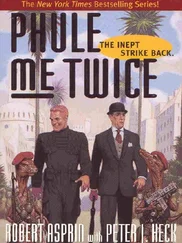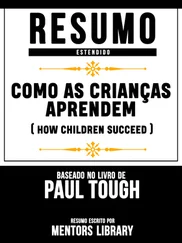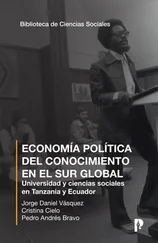In most societies, Seligman and Peterson wrote, character strengths were considered to have a moral valence, and in many cases they overlapped with religious laws and strictures. But moral laws were limiting when it came to character because they reduced virtuous conduct to a simple matter of obedience to a higher authority. “Virtues,” they wrote, “are much more interesting than laws.” According to Seligman and Peterson, the value of these twenty-four character strengths did not come from their relationship to any particular system of ethics but from their practical benefit—what you could actually gain by possessing and expressing them. Cultivating these strengths represented a reliable path to “the good life,” a life that was not just happy but meaningful and fulfilling.
For many of us, character refers to something innate and unchanging, a core set of attributes that define one’s very essence. Seligman and Peterson defined character in a different way: a set of abilities or strengths that are very much changeable—entirely malleable, in fact. They are skills you can learn; they are skills you can practice; and they are skills you can teach.
In practice, though, when educators try to teach character, they often collide with those moral laws. In the 1990s, there was a big national push for character education in the United States, inspired partly by encouraging comments from the First Lady, Hillary Clinton, and from President Clinton, who declared in his 1996 State of the Union address, “I challenge all our schools to teach character education, to teach good values and good citizenship.” But before long, the Clintons’ character campaign devolved into finger-pointing and mutual suspicion between advocates on both ends of the political spectrum; the right suspected that character-education initiatives were a cloak for creeping political correctness, and the left suspected the initiatives were hidden attempts at Christian indoctrination. Hundreds of American public schools now have some kind of character-education program in place, but most of them are vague and superficial, and those that have been studied rigorously have generally been found to be ineffective. A national evaluation of character-education programs published in 2010 by the National Center for Education Research, part of the federal Department of Education, studied seven popular elementary-school programs over three consecutive years. It found no significant impact at all from the programs—not on student behavior, not on academic achievement, not on school culture.
What intrigued Levin and Randolph about the approach Seligman was taking was that it was focused not on finger-wagging morality but on personal growth and achievement. KIPP is often considered moralistic by both its champions and its critics. In his 2008 book Sweating the Small Stuff, the journalist David Whitman approvingly applied the label “the new paternalism” to the methods that KIPP Academy and similar charter schools employed. These schools, Whitman wrote, taught students “not just how to think but how to act according to what are commonly termed traditional, middle-class values.” But Levin cringed at this notion. He disliked the idea that KIPP’s aim was to instill in its students middle-class values, as though well-off kids had some depth of character that low-income students lacked. “The thing that I think is great about the character-strength approach is that it is fundamentally devoid of value judgment,” he told me. “The inevitable problem with the values-and-ethics approach is you get into, well, Whose values? Whose ethics?”
5. Self-Control and Willpower
After that first meeting in Seligman’s office, Levin and Randolph kept in touch, calling and e-mailing, swapping articles and web links, and they soon discovered that they shared a lot of ideas and interests despite the very different school environments in which they worked. They decided to join forces and try to tackle the mysteries of character together, and they turned for help to Angela Duckworth, who at the time was a postdoctoral student in Seligman’s department. (She is now an assistant professor there.) Duckworth had come to Penn in 2002, at the age of thirty-two, later in life than a typical graduate student. The daughter of Chinese immigrants, she had been a classic multitasking overachiever in her teens and twenties. After completing her undergraduate degree at Harvard (and starting a summer school for low-income kids in Cambridge in her spare time), she had bounced from one station of the mid-nineties meritocracy to the next: intern in the White House speechwriting office, Marshall scholar at Oxford (where she studied neuroscience), management consultant for McKinsey and Company, charter-school adviser. She thought for many years that she might start her own charter school, but she eventually came to believe that charters weren’t the right vehicle to change the circumstances of poor children—or at least, they weren’t the right vehicle for her to use. When she applied to the PhD program at Penn, she wrote in her application essay that her experiences working in schools had given her “a distinctly different view of school reform” than the one she had started out with in her twenties. “The problem, I think, is not only the schools but also the students themselves,” she wrote. “Here’s why: learning is hard. True, learning is fun, exhilarating and gratifying—but it is also often daunting, exhausting and sometimes discouraging… . To help chronically low-performing but intelligent students, educators and parents must first recognize that character is at least as important as intellect.”
At Penn, Duckworth initially studied self-discipline. For her first-year thesis, she rounded up 164 eighth-grade students at Masterman Middle School, a magnet school in downtown Philadelphia, and gave them all both traditional IQ tests and standard assessments of self-discipline. Then, over the course of a school year, she evaluated their performances using a number of academic measures; at the end of the year, to the surprise of many, she found that the students’ self-discipline scores from the previous fall were better predictors of their final GPAs than their IQ scores.
Duckworth began to collaborate with Walter Mischel, a professor of psychology at Columbia University who is famous in social-science circles for a study known informally as the marshmallow test. In the late 1960s, Mischel, then a professor at Stanford University, developed an ingenious experiment to test the willpower of four-year-olds. At a nursery school on the Stanford campus, a researcher brought each child into a small room, sat him at a desk, and offered him a treat, such as a marshmallow. On the desk was a bell. The experimenter announced that she was going to leave the room, and the child could eat the marshmallow when she returned. Then she gave him a choice: If he wanted to eat the marshmallow, he needed only to ring the bell; the experimenter would return, and he could have it. But if he waited until the experimenter returned on her own, he would get two marshmallows.
Mischel intended the experiment as a study of the different techniques that children used to resist temptation. But it took on a new dimension more than a decade later when Mischel began to check up on the children in the experiment to see if their ability to delay gratification had predicted any academic or other outcomes. Starting in 1981, he tracked down as many students as he could find, and he continued to follow them for years afterward. The correlations between the children’s marshmallow wait times and their later academic success turned out to be striking. Children who had been able to wait for fifteen minutes for their treat had SAT scores that were, on average, 210 points higher than those of children who had rung the bell after thirty seconds.
Читать дальше



![Коринн МакКей - How to Succeed as a Freelance Translator [calibre 3.46.0]](/books/402693/korinn-makkej-how-to-succeed-as-a-freelance-transl-thumb.webp)








